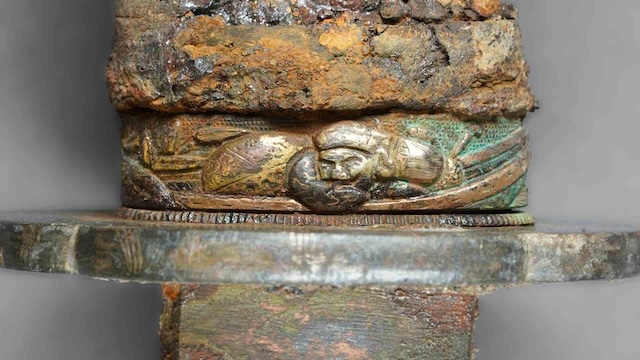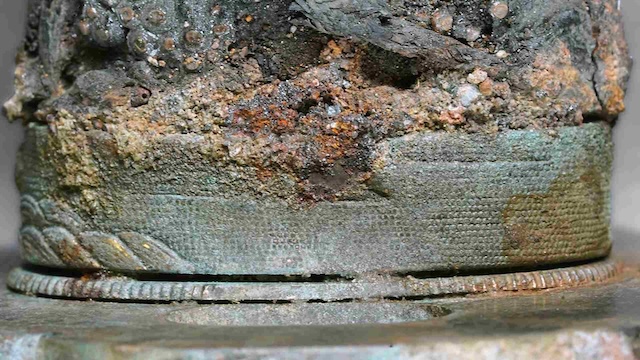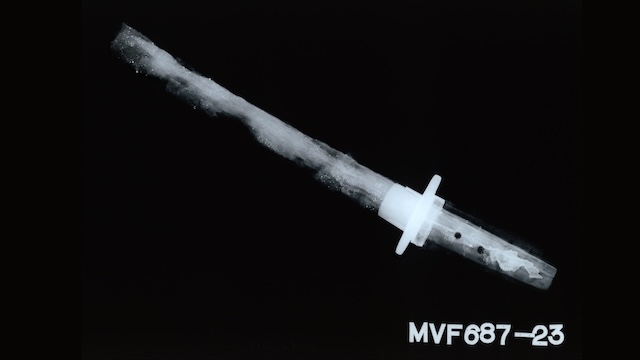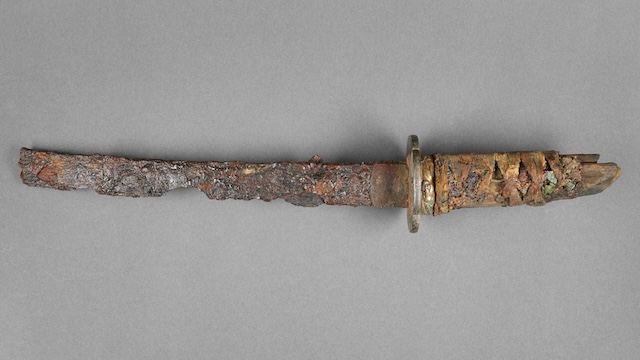The Molkenmarkt district in Berlin recently became the center of attention when a rare and surprising find was made during an excavation. Archaeologists from the Landesdenkmalamt Berlin uncovered a Japanese Wakizashi, a short sword dating back to the 17th century, hidden among the remnants of World War II rubble. This discovery sheds light on the untold stories of Berlin’s history and offers a glimpse into the city’s global connections.
Excavations at the Molkenmarkt: Uncovering History
The Molkenmarkt area, located in the Berlin district of Mitte, has long been a subject of historical and archaeological interest. This district was once a dense area filled with residential and commercial buildings that were destroyed during World War II. In the winter of 2022, archaeologists embarked on an excavation project to uncover the remains of these buildings and their cellars. What they unearthed went beyond expectations.
Amidst the rubble and debris, archaeologists discovered a number of artifacts related to artillery, such as stirrups, bits, and bridles, which had likely been hastily disposed of during the chaotic final days of the war. However, one object stood out among the rest—a severely corroded sword, initially believed to be a ceremonial military weapon. This discovery would soon reveal more than what was first assumed.
The Initial Assumption: A Parade Sabre
At the time of the excavation, the sword was thought to be a military ceremonial sabre, a conclusion consistent with the other militaria found at the site. The sword’s heavily corroded state did not reveal much at first glance. Its presence among the military items suggested that it might have been discarded by soldiers retreating or seeking to hide valuable possessions during the end of the war.

The sword was transferred to the Museum für Vor- und Frühgeschichte for further conservation and restoration, as is the standard practice for any artifacts found in Berlin. What followed next was an astonishing discovery that added a new layer to Berlin’s historical narrative.
Restoration at the Museum für Vor- und Frühgeschichte
The restoration team at the Museum für Vor- und Frühgeschichte began their work on the sword, expecting to restore a piece of ceremonial European military history. Instead, what they uncovered was something far more unique—a Japanese Wakizashi. A Wakizashi is a type of short sword traditionally used by Japanese samurai, and this particular sword was determined to date back to the 17th century Edo period.
One side of the sword’s hilt had been severely damaged due to heat exposure, likely a result of the wartime destruction. Despite this, the wooden grip was still largely intact, along with remnants of the fabric and shagreen wrapping. As the restoration process continued, the ferrule (a metal ring on the hilt) was exposed, revealing intricate ornamentation.
Among the details uncovered was a depiction of Daikoku, one of Japan’s Seven Lucky Gods, symbolized by a hammer and a sack of rice. Further ornamentation, including chrysanthemum motifs and waterline designs, provided additional clues to the sword’s origins, confirming that it belonged to the Edo period.

The Wakizashi: A Japanese Treasure in Berlin
The Wakizashi is a short sword traditionally worn by samurai alongside a longer sword known as a katana. It was used for close combat and as a secondary weapon in cases where the katana was not practical. This particular Wakizashi, now found in the heart of Berlin, was not only a relic of ancient Japan but also an artifact that raised questions about its journey to Europe.
Upon closer examination, X-rays of the sword revealed that the blade had originally been longer. It had been shortened at some point in its history, and the current grip was not the original one. This suggested that the sword had undergone modifications, possibly for reuse as a shorter weapon, or it might have had a new grip fitted for ceremonial purposes. The blade, however, was older than the hilt and likely dated back to the 16th century, making it an even more significant find.
Historical Context: Japan’s Isolation and European Encounters
The presence of a 17th-century Japanese sword in Berlin raises intriguing questions about how this weapon made its way to the city. During much of the Edo period, Japan was largely isolated from the rest of the world under the Sakoku policy, which restricted foreign trade and contact. However, there were a few notable exceptions, such as the First Japanese Embassy to Europe in 1862 and the Iwakura Mission in 1871, both of which sought to establish diplomatic relations and study Western culture.

The discovery of the Wakizashi in Berlin suggests that it may have been a diplomatic gift or part of the possessions of one of these missions. Given the proximity of the Molkenmarkt to aristocratic palaces and the Berliner Schloss, where Wilhelm I hosted Japanese legations, it is plausible that the sword arrived in Berlin during this period of diplomatic exchange.
The Mystery of Provenance: Who Owned the Sword?
Despite the fascinating historical connections, the exact provenance of the Wakizashi remains unknown. The records of the residents and commercial owners of the Stralauer Straße buildings do not provide any clear indication of how the sword ended up in the backfilled cellar. However, the sword’s ornate design and the fact that it was likely used for ceremonial purposes suggest that it once belonged to a high-ranking individual or a collector of fine artifacts.
The theory that the sword might have been a diplomatic gift is supported by the fact that similar objects from Japan found their way into European collections during the late 19th century. Nonetheless, without more concrete evidence, the full story of how this Wakizashi came to be buried beneath the streets of Berlin remains a mystery.

Conclusion: Unearthing Berlin’s Hidden Treasures
The discovery of a Japanese Wakizashi beneath the rubble of Berlin’s Molkenmarkt is a testament to the rich and complex history that lies hidden beneath the city’s surface. From the devastation of World War II to the layers of history that preceded it, every artifact uncovered offers a new chapter in Berlin’s story. This particular find not only highlights the global connections Berlin had during different eras but also underscores the importance of meticulous archaeological work.
As archaeologists and historians continue to investigate, the sword remains a symbol of the unexpected treasures that can be unearthed, reminding us that history is often more interconnected than we realize. With every discovery, we gain a deeper understanding of the people, places, and events that shaped the world we live in today.
